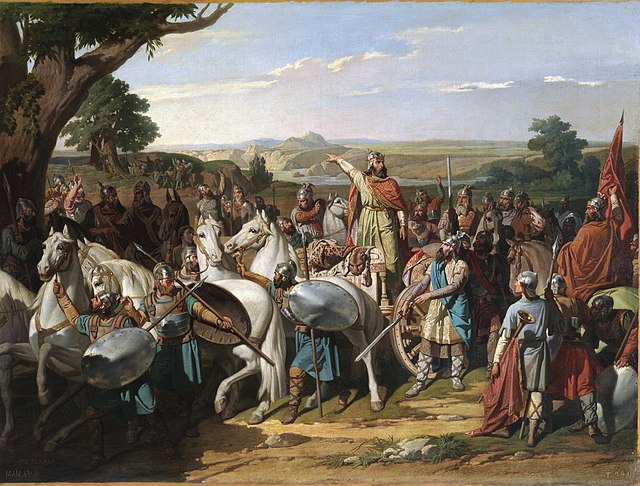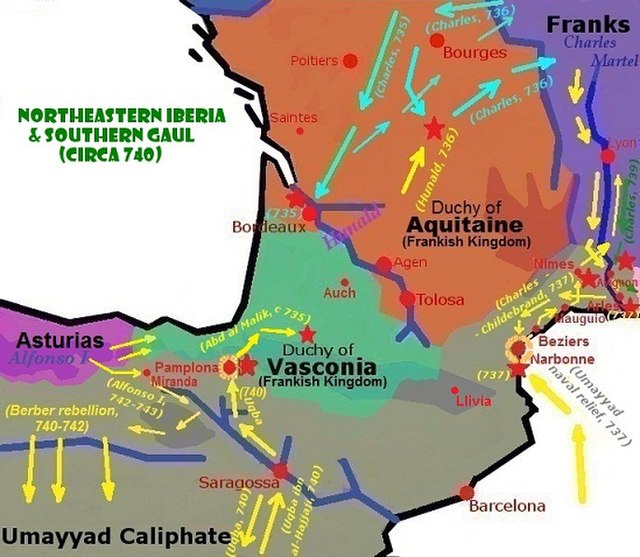The Battle of Guadalete was the first major battle of the Muslim conquest of the Iberian Peninsula, fought in 711 at an unidentified location in what is now southern Spain between the Visigoths under their king, Roderic, and the invading forces of the Umayyad Caliphate, composed mainly of Berbers and some Arabs under the commander Tariq ibn Ziyad. The battle was significant as the culmination of a series of Berber attacks and the beginning of al-Andalus. Roderic was killed in the battle, along with many members of the Visigothic nobility, opening the way for the capture of the Visigothic capital of Toledo.
The Visigothic retreat in front of the Berber cavalry, as depicted by Salvador Martínez Cubells (1845–1914)
Muslim conquest of the Iberian Peninsula
The Muslim conquest of the Iberian Peninsula by the Umayyad Caliphate occurred between approximately 710 and the 720s. The conquest resulted in the defeat of the Visigothic Kingdom and the establishment of the Umayyad Wilayah of Al-Andalus.
King Roderic Addresses his Soldiers at the Battle of Guadalete by Bernardo Blanco y Pérez (1871)
Bilingual Arabic–Latin dinar issued c. 716
Roderic, second figure with no face, depicted as one of the "six kings" in an Umayyad fresco in Qasr Amra, modern-day Jordan (710-750)
Northeastern al-Andalus, the Pyrenees and southern Gaul at the time of the Berber rebellion (739–742)





